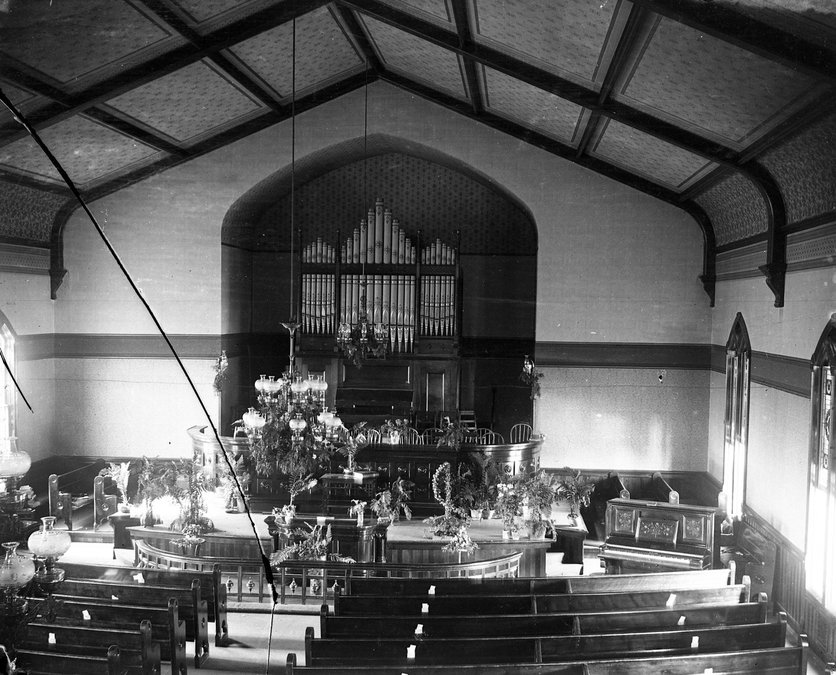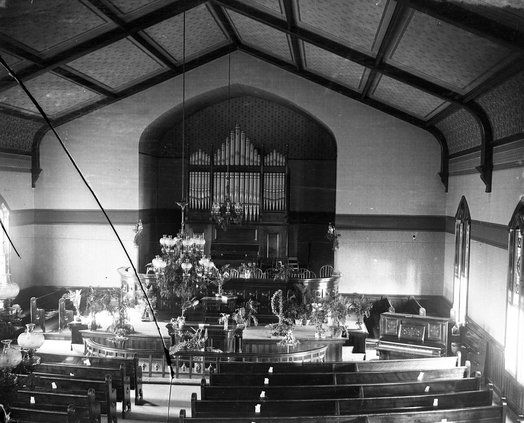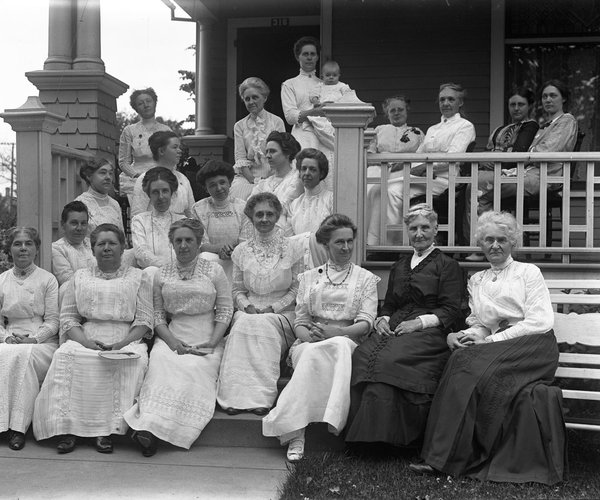The completion of the M. E. Church in Monroe was about to get its biggest boost since the groundbreaking almost 17 years ago. In late January 1886, local entrepreneur and brother-in-law of Arabut Ludlow, Benjamin Chenoweth, came forward with an offer to the Church Society. If the society would raise money and build an $8,000 parsonage, he would furnish an equal amount toward finishing the church edifice (which would cost not less than $4,000). The editor shared, “A good, substantial looking, brick parsonage, and a finished church should be the next temporal results of the Methodist society here, within the coming year.” He also thought that the citizens of Monroe, outside the church, would “no doubt lend a helping hand to the Methodist people to complete the property begun so many years ago, and lift from the landscape, the neglected aspect of a half finished church and a dilapidated parsonage going to decay.”
Nine Trustees of the church met on Tuesday afternoon, February 2 to consider Chenoweth’s generous offer. They “were unanimous in spirit and accepted the offer made.” The buildings were to be completed without any debt with work beginning without delay. If the parsonage reached a greater amount than specified, Chenoweth would add to his donation. A new pipe organ was also to be placed in the church as part of Chenoweth’s plan.
The site for the new parsonage, on the southwest part of the block, was announced on March 10 with work beginning early that spring. At the time, the $4,000 fund was nearly all subscribed with no doubt that the parsonage and church would be finished that summer. The committee consisted of Charles Pike, A. W. Goddard, and. A. C. Stuntz. Plans could be seen at Goddard’s store after April 29, with bids due by May 4.
Unfortunately, the bids for building the parsonage came in too high. The committee was “considering the matter” and where to meet on May 18. Nothing was reported on that meeting, but the workmen were waiting for lumber on June 30. The church improvement was progressing at that time, nearly ready for the plastering. “The elegant new parsonage” was nearing completion by early November and the workmen were decorating the interior of the church with paper and paint.
The editor shared at the end of the year, “When the old parsonage building is removed the Methodist people of Monroe can rejoice in one of the handsomest places of property in the State. The improvements this year put upon the property will exceed $8,000.”
A letter to Ben Chenoweth from the Trustees was shared on February 16, 1887. Parts of it said, “We hope and pray the edifice completed may stand for generations a monument to your good name” and “We pray that it may be your privilege to attend many divine services therein.”
It was announced on April 6 that the dedication of the building would be on May 22 with the new pipe organ expected to be here. “A grand organ recital” was also held the evening before with “a fine organist from Chicago” playing it. The organ, which was donated by Mrs. Pike, arrived that week and representatives of the builders were here to place it in position before the concert.
A “large working bee” was held to level and beautify the grounds around the church. The old parsonage was moved to the northeast corner of the lot and placed upon a new foundation. The plan was to put it “in good order to rent.” The whole property was “made clean and orderly before the dedication.”
A description of the organ recital said, “The church was beautifully lighted, and the decorated walls and ceilings, the elegant chandeliers, the bright, polished, cherry woodwork, the beautiful organ, and the large, well-dressed audience made up a scene long to be remembered, especially by those who have worked hard for the completion of this beautiful church.”
At the same time, it was reported that more than $1,200 was subscribed for the “completion fund” that weekend. The minister, Mr. Kellerman, was to undertake raising “about $500 more to clear up the debt and finish the repairs and improvements on the property.” Elder Irish said that it will be “the most beautiful and complete [church] belonging to the M. E. Church in the State although not as expensive as several others.”
The completion of this church had taken 18 years, so it was no surprise that it was reported on June 1 that “a new roof on the M. E. Church is in process.” James Faubell completed the painting of the steeple in mid-July. “It appears to be a first-class piece of work.” He said, “while he was at the tip top, he could look down upon every person in Monroe.”
On the third Sunday of January 1888 the temperature was -28. The auditorium of the church was so cold that the congregation of about 75 people, the minister, and the choir went down to the vestry and held services near the furnace.
Much maintenance was needed on the building during the coming years. The well was being drilled several feet deeper in January 1890 “in the hope of obtaining a better quality of water.” The disabled bell, which had hung useless in the tower for several months in November 1892 was replaced with a new one. The new bell was heavier and had “a much fluer tone than the old one.”
Extensive repairs and improvements were being made on the church property in October 1895.
The parsonage was having a new coat of paint and other improvements. The large, hot air furnaces in the church were being overhauled; the system of pipes and registers were also changed to make them more efficient for heating the large rooms above and below during the winter.
This early history of the Monroe Arts Center building will conclude next week.
— Matt Figi is a Monroe resident and a local historian. His column will appear periodically on Saturdays in the Times. He can be reached at mfigi48@tds.net or at 608-325-6503.




